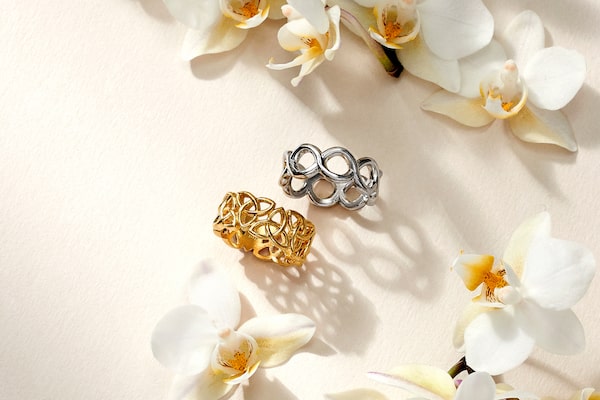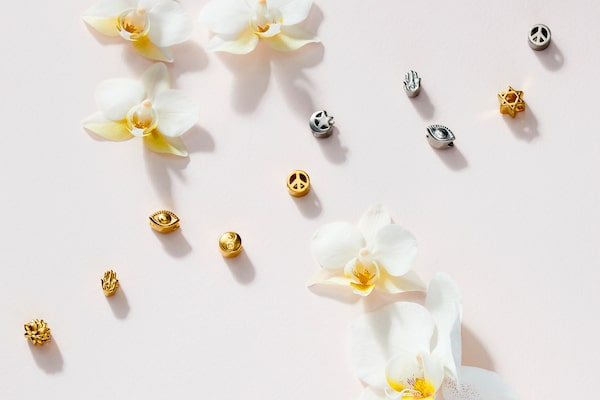Jewellery may be a fashion accessory, but Mene Inc. extols a traditional notion – that its gold or platinum charms, rings and bracelets can be investments, too.
The upstart luxury online retailer aims to disrupt the industry by selling its pure, 24-karat jewellery by gram weight and letting consumers monitor the value, which fluctuates daily with the spot price of its precious metals.

Roy Sebag, CEO of Mene Inc., is a former Wall Street hedge fund manager and self-described contrarian investor.Brian Shumway/Mene
“It’s like owning a gold [bullion] exchange-traded fund, but you are wearing it,” says Roy Sebag, co-founder and chief executive officer of Toronto-based Mene. “You track the value of the jewellery like a stock [or ETF] and see the performance.”
Mene’s customers, in their personal accounts on the company’s website, can see “a graph that shows the cumulative performance of their entire collection in real time,” says the former Wall Street hedge fund manager and self-described contrarian investor. “It’s like dealing with an online broker like TD [Direct Investing].”
Mene, which began actively selling its jewellery in January 2018, went public last fall after being spun off from Goldmoney Inc., a Toronto-based dealer focused on selling, buying and storing precious metals. When Goldmoney, which still owns 35 per cent of Mene, was launched several years earlier by Mr. Sebag, some of his early backers included investor heavyweights Eric Sprott and George Soros.

Diana Widmaier Picasso, granddaughter of the Spanish painter, oversees designs of Mene jewellery.Mene
In starting Mene, Mr. Sebag teamed up with Paris-based art historian Diana Widmaier Picasso, also granddaughter of the late Spanish artist Pablo Picasso. As chief artistic officer, she oversees the designs.
While selling precious-metal jewellery by gram weight has long been common in countries such as India and China, Mene is “taking it to a new level,” Mr. Sebag says, with modern, Western designs, technology and disclosure to consumers of the breakdown between the value of the gold or platinum piece at the time of purchase and Mene’s profit margin.
The company charges a 20- to 30-per-cent premium, which covers design, manufacturing and shipping. That means that most of the purchase price is left to consumers for an investment.

Gold and platinum rings from Mene. If they wish, customers can sell their jewellery back to the company at the prevailing values for the metal, or exchange it for another item.Mene
Mene, which is named after the ancient Aramaic word for money, has even trademarked the term “investment jewellery” to stress the link between jewellery and a store of wealth. Consumers can enjoy wearing these pieces but also know that their value may rise over time because they are really buying a weight of gold or platinum, he says.
Although the price of gold is notoriously unpredictable, consumers who bought Mene’s gold jewellery six months ago would have seen its value rise. The London gold fix price, which was about US$1,190 an ounce on Oct. 1, has climbed to about US$1,300.
Mene’s customers can also sell their jewellery back to the company at the prevailing values for the metal, or exchange it for another item if they wish. The fee is 10 per cent of the value of the piece plus extra if an exchange is for a higher-weight item.
“We send you an envelope and you drop it off at any UPS Store,” Mr. Sebag says. “It’s like the old Netflix system where you drop off your DVD to mail it back.”
The markup for Mene’s metal jewellery, which is never laden with gemstones or diamonds, is also vastly lower than the premiums charged for similar items by luxury retailers such as Cartier International SNC, Pandora AS or Tiffany & Co., he maintains. More often, these companies tend to sell 14- to 18-karat jewellery, which is not the pure metal, he notes.

Gold and platinum charms made by Mene.Mene
Mr. Sebag is not concerned about competition from such rivals encroaching on his turf. “I don’t believe they can,” he says. “They would not enjoy the high margins that that they have now.”
Mene could also disrupt the traditional gold-investment landscape, he says. Consumers considering the purchase of gold or platinum coins might instead buy Mene jewellery for a spouse or grandchild because it has more utility than metal stored in a safe, he adds.
Among Mene’s best-sellers are its charms, such as a peace symbol, star of David or even a dog paw. The jewellery, which is made of gold and platinum mined in North America, is manufactured in the United States.

A Mene gold pendant. The company ships to some 50 countries.Mene
While some consumers may not be comfortable shopping for jewellery online, that is changing in the estimated US$300-billion global industry, he says. According to British market researcher Technavio, online jewellery sales are rising at about 16 per cent annually and could reach US$34-billion by about 2022.
Still, Mene is considering opening brick-and-mortar locations where consumers can see and order its jewellery, which would then be mailed to them. The company ships to some 50 countries.
Although the concept of wearable investments has not yet caught on in North America, consumers could take a page from India and China, where jewellery is typically sold at 22-karat or better, says Mr. Sebag.
One often hears about the Indian grandmother’s love affair with jewellery that is often worn as bangles on the wrists. What is actually happening, Mr. Sebag says, is that she is long on gold and is shorting the rupee, “which loses about 20 per cent a year because it is one of the most inflationary currencies in the world.”
In the East, people are often not looking to buy expressive jewellery, he says. “They are buying it for the store of enduring value.”